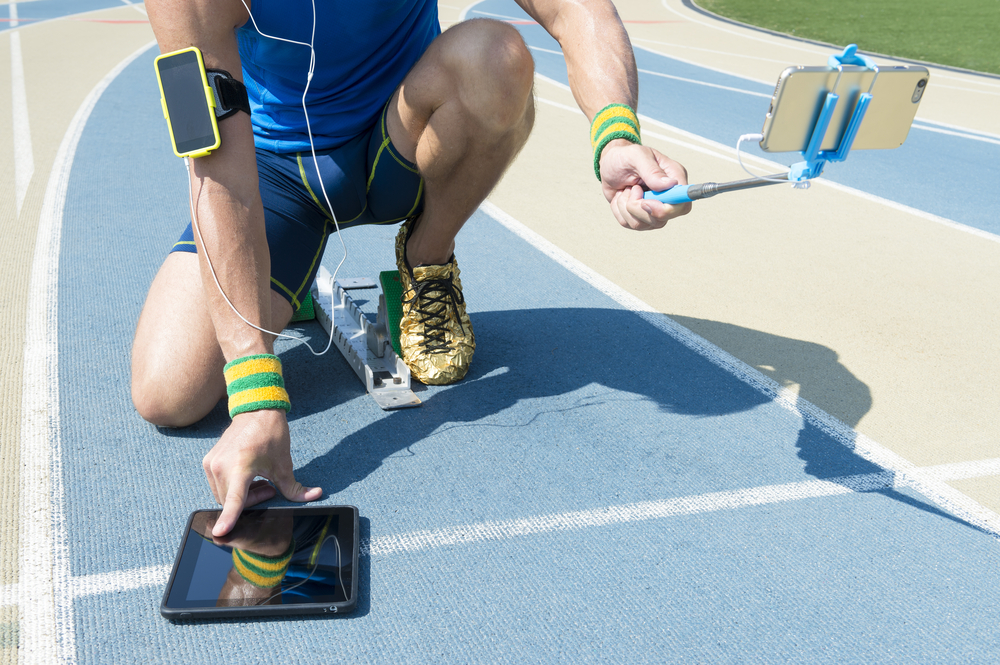Introduction
Technology has established itself as the ultimate game-changer in the fast-paced world of sports, where milliseconds and millimeters can mean the difference between victory and defeat. A significant shift is taking place in the field of contemporary sports training, from the slick wearables that athletes sport to the complexities of data analytics. This revolution goes beyond the confines of conventional athleticism and pushes the limits of human potential. Athletes can access real-time data and be encouraged to follow a personalized training plan thanks to modern wearables like heart rate monitors and GPS units. Concurrently, the combination of augmented reality and virtual reality produces immersive settings that go beyond conventional training, changing how players see and respond to game situations. Analytically speaking, player tracking systems and biomechanical analyses provide data-driven insights that improve training methods and boost output. This technological revolution is about to take off, and sports are leading the way into a new era where performance, personalization, and accuracy come together like never before thanks to the combination of innovation and athleticism.
- Wearable Technology: A Personalized Approach to Training
In sports, wearable technology has proliferated, giving athletes access to real-time data that helps them tailor their training plans. Athletes and coaches can gain invaluable insights into a range of performance metrics with the help of fitness trackers, smartwatches, and specialized wearables such as heart rate monitors and GPS devices. These gadgets track sophisticated metrics such as sleep patterns, recovery rates, and even stress levels in addition to more basic ones such as heart rate and steps. Using this information, athletes can customize their training plans to maximize their potential for success while lowering their risk of injury. Equipped with an abundance of data, coaches are able to customize training plans for specific athletes, thereby optimizing their capabilities.
- Virtual Reality (VR) and Augmented Reality (AR): Immersive Training Environments
Beyond the world of video games, virtual reality and augmented reality are finding previously unthinkable uses in sports training. With virtual reality (VR), athletes can fully submerge themselves in environments that mimic game situations or offer a 360-degree perspective of a field or court. Reaction times, spatial awareness, and decision-making abilities are all improved by this immersive experience. Athletes can get immediate performance feedback by using augmented reality, which superimposes digital data on the physical world. AR, for instance, can provide a soccer player tactical information superimposed on the field or visual cues on a tennis player’s swing. This blending of the virtual and physical worlds is giving athletes a competitive advantage by changing the way they mentally train for events.

3. Data Analytics: Unraveling the Science of Performance
A new era of sports analytics has been brought about by big data, and it is revolutionizing how teams and athletes approach practice and competition. With the use of sophisticated analytics tools, coaches can analyze enormous volumes of data to learn more about player performance, the efficacy of their strategies, and the patterns of their opponents. GPS and RFID-powered player tracking devices gather information on a player’s gait, pace, and distance traveled during practise and competition. After that, this data is examined to determine its advantages, disadvantages, and potential for development. Predictive analytics is a useful tool for teams to make strategic substitutions, anticipate opponent strategies, and optimize game plans.
4. Biomechanics and Motion Analysis: Precision in Movement
Biomechanics-related technological developments have completely changed how athletes assess and improve their motions. Motion capture systems, which have sensors and cameras built in, offer a thorough analysis of an athlete’s training biomechanics. This degree of accuracy makes it possible to spot technique inefficiencies and make focused changes for improved performance and injury avoidance. In sports such as golf, where achieving the ideal swing is a lifelong goal, or track and field, where sprinters strive to maximize their running mechanics, biomechanical analysis is especially important. Athletes and coaches can optimize their training methods and reach maximum performance by comprehending the nuances of movement.

5. Recovery Technology: Balancing Intensity and Rest
Athletes are frequently pushed beyond their physical limits by the demands of modern sports. Recovery technology has become a crucial component of training regimens to help athletes counteract the stress placed on their bodies. A few innovations that help with muscle recovery, reduce inflammation, and speed healing are sensory deprivation tanks, compression therapy, and cryotherapy. Additionally, biofeedback tools that track physiological markers to evaluate the state of an athlete’s recovery have been made possible by technology. Athletes can better balance pushing their limits and avoiding burnout or injuries by using this data-driven approach to optimize rest periods and training intensity.
Conclusion
The combination of technology and sports training has ushered in a revolutionary era that offers a plethora of opportunities that were unthinkable just a few years ago. With the advent of customized wearables and immersive virtual environments, the field of athletic development has undergone an irreversible transformation. Coaches and athletes who are innovators in this technological frontier can obtain a significant competitive advantage. Together, biomechanics, recovery technology, and data analytics reframe the objective of sports training and push the boundaries of human performance. At this moment, when the past and present converge, athletic technology is developing at an exponential rate. Warmly welcomed, these developments portend an intriguing progression, offering uncharted territories of success. The story of technology and sports is still being written, but each new development is bringing us closer to a time when the fusion of science and athletics will fundamentally alter how we view human potential.
